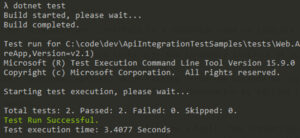In the world of software and web applications, we inevitably run into issues or “bugs” as RSI likes to call them. The “bugs” can range from a small annoyance to something that could critically disrupt the use of our software. No program, big or small, is free of “bugs”. They are introduced when developers make changes to the code behind the scenes for new features or even fixing other “bugs”. The code for most applications is so complex and holds many moving parts, that even the best developers in the world create bugs in their code.
How to reduce the number of bugs in software?
When code goes through the development process, there are several stages before it’s ready for the client. In each stage, testing is the magic of how to filter out as many bugs as possible to create the best user experience when the system is launched. The first stage is in the development stage, developers test their code to make sure their changes work as intended. This testing is called “Unit Testing”.
What is Unit Testing?
Unit testing can be completed in 2 different ways; manual unit testing and automated testing.
- Manual Unit Testing
There are several different ways to complete manual unit testing. RSI’s recommended and successful approach is using a debugging tool. The process runs the program and allows the developer to go through the code line by line making sure the updated data is running through the code accurately as expected. This process tends to be time-consuming and must be completed thoroughly each time the code is updated.  Automated Unit Testing
Automated Unit Testing
In order to complete automated unit testing, there needs to be separate files written to isolate each piece of code to ensure the code is working correctly. Just like the name suggests, these tests run automatically with a click of a button. By completing the process, it takes care of that lengthy debugging process. Initially these tests can take more time than a manual test but it all depends on what the client is looking for and how the RSI team decided to best handle the “bug”.
If unit testing is time consuming, why are they used?
Since the unit testing is time consuming, we run into the age old debate among developers. Despite the lengthy process of creating unit tests, they provide effective benefits to the developer, the IT company, and the client. The key advantage of unit testing is if completed correctly, the unit testing only needs to be written once. From there the unit testing can be used to test changes to code quickly and efficiently reducing overall time in future development or changes to the code.
Another advantage to completing unit testing is having a significant reduction in the bugs making their way to the client due to the consistency and efficiency the unit testing provides. Consistency allows unit tests to be well thought out and check the same test cases every time. Efficiency is because they can test all the code to ensure your change to one piece of code doesn’t affect or break another piece of code somewhere else you wouldn’t expect.




